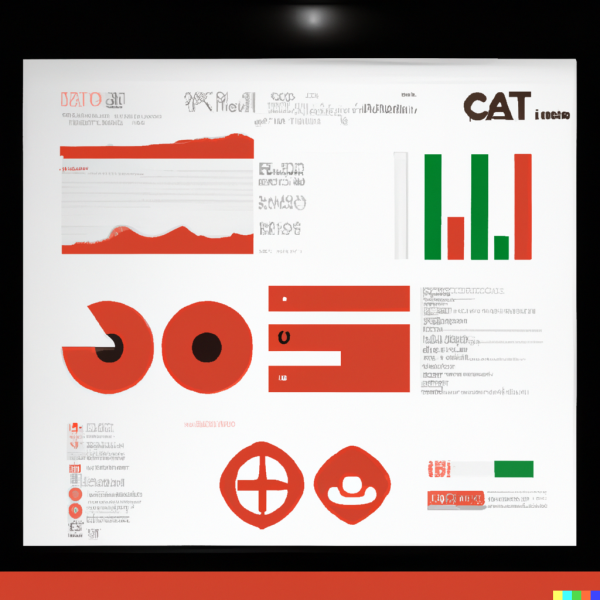For decades, Cost-per-Call has been a cornerstone metric in measuring and communicating the expense associated with running a call center and serving customers.
Cost-per-Call is also frequently used to calculate the Return on Investment (ROI) when evaluating new technology. If a new technology, such as an Intelligent IVR or AI Self-Service, can reduce your Cost-per-Call, then it's generally worth evaluating as a solution. This guide will help you calculate the cost per call/contact for your call center cost. Know how to leverage technology to manage your call center cost.
The Traditional Approach
The traditional calculation for cost-per-call is straightforward enough. You simply divide your total call center costs by the number of calls answered to get an average amount it costs you to handle each call.
(Total Cost/Total Calls Answered)
There are a few variations to the standard cost-per-call equation that you might consider when getting a clear picture of your call center operations.
For example, should you include abandoned calls in the equation? What about repeat callers? Including repeat callers in your cost-per-call will make the average lower, but its not reflective of the true cost of having that customer have to call you multiple times to resolve an issue. Therefore, if you're able to measure First Call Resolution (FCR), or back-out customers that call you multiple times, then you will have a new benchmark to measure your service cots.
The same holds true with abandoned calls. While calls that abandon in queue technically cost less than those answered by a live agent, it can end-up costing you more in lost customers or result in repeat calls.
Cost Inputs
Accurately accounting for the expenses that go into your cost-per-call calculation is critical.
First and foremost, you will be able to clearly communicate and benchmark performance across your organization. Having the CFO on the same page as the call center manager with respect to measurements and controls will enable everyone to collaborate and work together on critical initiatives to meet company objectives.
Secondarily, once you can measure each cost input then you can manage it. Therefore, your team will have clear picture of what levers can be pulled to control costs and still deliver the customer experience your company desires.
Call Center Labor
Labor is almost always the largest expense in any contact center. This includes your agents, supervisors, managers, quality assurance, and anyone else who directly support the call center. For larger call centers this would also include a workforce management team and perhaps even a call center director.
When quantifying your labor expense, it's critical to capture the fully loaded costs. It's easy to just take the base hourly rate for a call center agent and assume that's your cost-per-hour, but its not. Employers have additional costs, such as employment taxes and benefits of various kinds. It's best to work with your financial controller or CFO to get the true cost for each position in your contact center and use that to model your true labor expense.
Recruiting, Hiring and Training
It costs money to recruit, hire and train an agent to get them ready to answer their first phone call.
Recruiting costs typically include the cost of your recruiter or HR resource that's facilitating the hiring and interviewing. Also include any advertising costs or third-party recruiting fees.
The initial training, often referred to as "New Hire Training" for an agent can range between a couple of weeks to a couple of months depending on the complexity of the calls and the number of systems that agent needs to be familiar with.
Since training classes tend to happen on an as needed basis and for multiple agents at once, you might want to consider factoring this into a monthly, quarterly or annual cost-per-call equation.
Telephony Infrastructure
Telephony can be a rather large expense for contact centers depending on your environment. There are two main cost drivers for your telephony expenses: your phone system and your phone company.
Your telephone costs may vary drastically depending on whether you have an on-premise ACD or if you're using a cloud based system.
On-premise ACDs come with a large upfront capital expense that typically gets depreciated over its months of useful life. They also come with monthly expenses for phone ports from your telephone service providers. It's important to understand the full support costs for on-premise phone systems because you typically pay annual maintenance and support fees to the vendor and will need to budget for periodic upgrades and licenses for new features. Speak with your CFO to determine what this looks like.
On the contrary, with a hosted or cloud based telephone system there is typically a small upfront cost to set-up the system and then you pay monthly based on usage or for per agent licenses.
In both cases, there are also per-minute costs for telephone usage. This can vary widely depending on the type of phone system and service providers you use. But again, gaining an understanding of these expenses can help you decide with approach is best for your call center.
Per Agent Software Licensing
An often overlooked input for cost-per-call is the additional software that companies use to manage their contact center. This includes things like: Workforce Management Software, Quality Assurance Monitoring, Speech Analytics, and Customer Relationship Management (CRM).
Typically, these are licensed per agent on either a monthly or annual basis.
Fixed Costs
Unless your agents are Work From Home (WFH), then your company will have a cost of Real Estate for your physical contact center. This could be in the form of a lease or even a company owned property.
The cost of real estate is usually fixed on a monthly or annual basis. Meaning that it doesn't fluctuate based on call volume or even agent count. For example, if you suddenly reduced your agents from 200 to 100, would you be able to downsize your call center and reduce your rent or would you be stuck paying the same amount per month or year for your building?
The more calls you handle with a fixed cost, the lower the cost per call. If you deflect calls or shift the interactions to other channels, such as chat, then cost-per-call can actually go up. This is because your fixed costs are spread out across fewer calls.
An Updated Approach
Being able to quantify your total cost-of-service and the variables that you can control are critical.
Prior to automation and multi-channel interactions, the traditional approach to calculating cost-per-call made sense. When people wanted to interact with your company, they called you. Maybe you had an IVR that could automate a small percentage of your calls, but usually the telephone was the only way to reach you. It was therefore pretty straightforward to calculate and understand your customer service costs.
However, in an environment where customer interactions have become multi-channel, or even automated, its important to understand and measure your Cost-per-Interaction along side of your cost-per-call.
The expense inputs for calculating cost-per-interaction are similar to cost-per-call, but your calculations should include interactions that also take place across other customer touch points. These could include digital channels such as: natural language IVR, email, SMS, chat, social media and self-service options on your website.
Moving customers to non-phone based interactions can save your company money and even improve your customer experience. While your cost per call may stay relatively flat in these scenarios, your total cost of service will decrease. Its good practice to breakout your cost-per-interaction by digital channel to get measure the effectiveness of each. This will make your CFO happy.
Modeling by Call Driver and Call Type
Getting at a cost-per-call by line of service or call type is also important. Some calls may cost you more to answer and service than others. For example, a sales call may have a longer handle time and require higher skilled and higher paid agents than calls for checking on an order status. In that circumstance, your cost-per-call for the sales call would be higher than that of the order status call, however the sales call will have revenue tied to it, whereas the order status call is merely adding to your total cost of service. Therefore, the order status call is a prime target for automation.
It can be difficult to quantify your cost-per-call by call type if all you are not using any skills based routing or intelligent routing. While I'm a fan of consolidating skill groups when possible to gain staffing efficiency, make sure that you are able to track each call type separately.
The more granular you can measure cost-per-call, the more effective you will be at managing it.
Reducing Cost-per-Call
As discussed earlier, lowing cost-per-call might not be the end goal, but rather the objective should be to lower your total cost of service for a given set of business drivers, such as total customer base.
Once you've established what your cost-per-interaction is across your lines of business, then it is easy to model different cost savings options and interventions.
For example, an immediate way to reduce your cost-per-call is to automate customer interactions using Xaqt's AI Self-Service suite and Conversational AI for Intelligent IVR, Chat or SMS.




